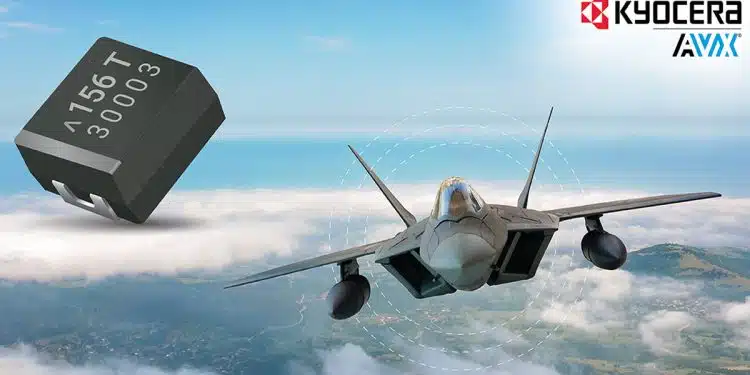KYOCERA AVX, a leading global manufacturer of advanced electronic components engineered to accelerate technological innovation and build a better future, released the new TCD Series DLA 04051 and COTS-Plus conductive polymer tantalum capacitors.
These new high-reliability conductive polymer capacitors are engineered for use in demanding military, aerospace, defense, and industrial applications, including power supplies and filtering circuits, and compliant with the new DLA 04051 military specification.
TCD Series conductive polymer capacitors are currently available in two case sizes (EIA 1210 and 2917) with lead-free and RoHS-compliant 100% tin terminations or tin/lead (Sn/PB) terminations.
They are rated for 10–470µF ±10 or 20% tolerance, 4–50V, and operating temperatures extending from -55°C to 125°C. The new TCD Series capacitors exhibit high CV, very low ESR, very low DC leakage (0.1 CV), stable, high-frequency capacitance retention, long lifetime performance (2,000 hours at 125°C), and a benign failure mode under recommended use conditions.
They also exhibit basic reliability of 0.5% per 1,000 hours at 85°C and reliably withstand vibration, surge voltages, rapid test solder heating (RTSH), and biased humidity testing at 85°C and 85% relative humidity for at least 500 hours.
In addition, TCD Series capacitors are subjected to statistical electrical screening and surge current screening. They are also available with two enhanced testing options per DLA 04051. Test option A subjects parts to a life test at +125°C for 2,000 hours, and test option B subjects parts to vibration, surge voltage, RTSH, and life testing at +125°C for 2,000 hours.
“KYOCERA AVX offers a broad range of solid conductive polymer electrolytic capacitors tested and proven to satisfy the unique demands of applications ranging from general and space-constrained electronics applications to solid-state device, high-voltage, high-reliability, automotive, and now mil-spec electronics applications,” said Allen Mayar, Global Product Manager at KYOCERA AVX. “We’re proud to further expand this product portfolio with the new TCD Series and to provide customers across multiple market segments with innovative solutions to their demanding board-level design challenges.”
TCD Series capacitors are currently available with a 24-week lead time.































